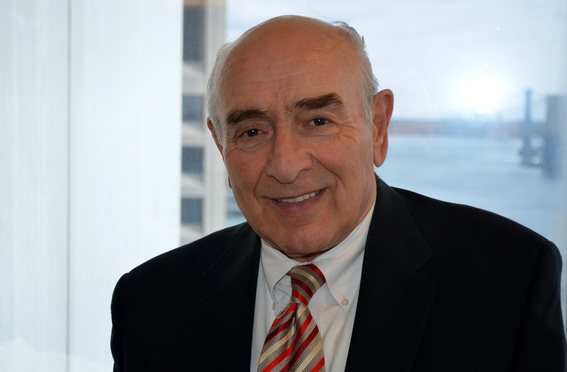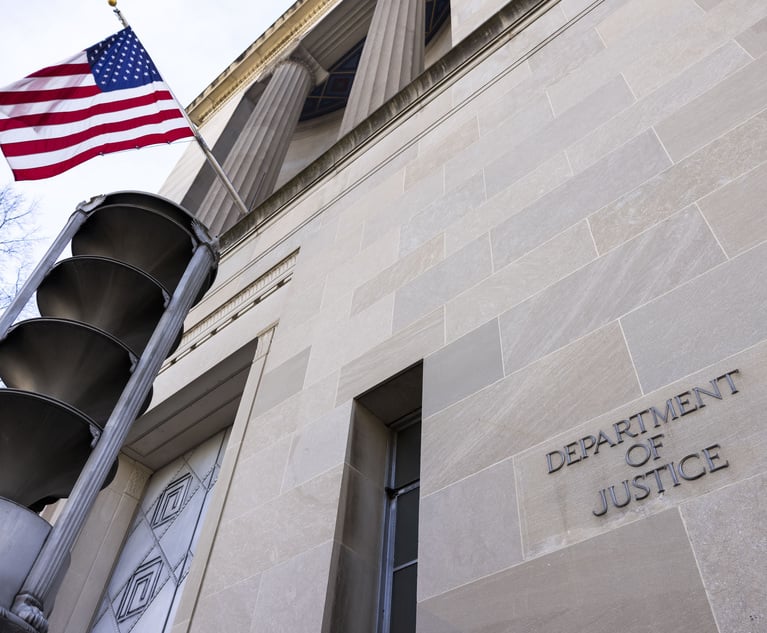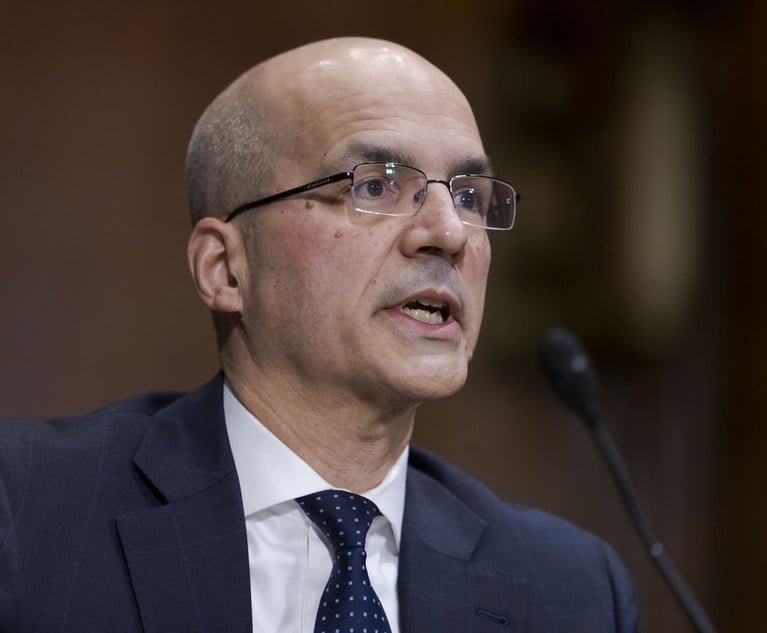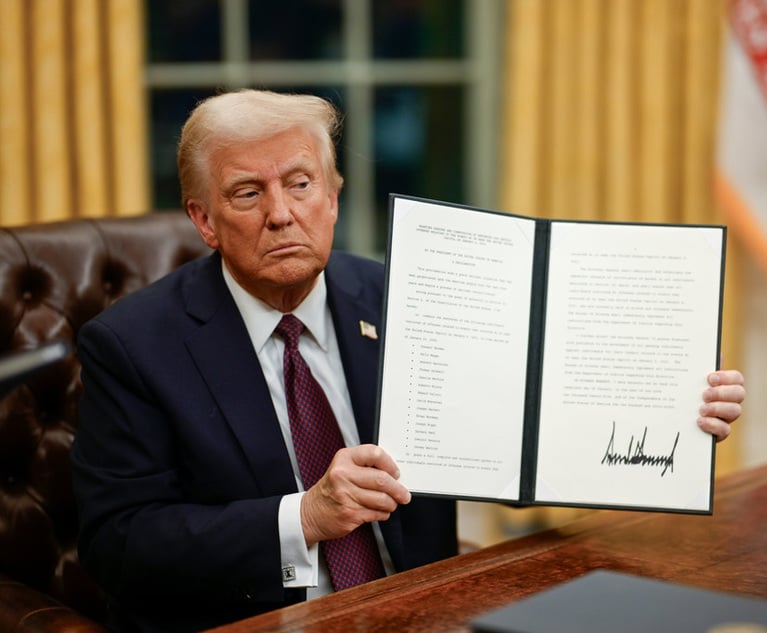'Residual Hearsay' Exception: Recent Changes Bring More Muscle
In his Complex Litigation column, Michael Hoenig discusses the hearsay rule and some of its exceptions, particularly focusing on the newly revised revised Rule 807, which is now seemingly more muscular than the old rule and may go from rare use to a thriving battlefront.
February 07, 2020 at 12:15 PM
10 minute read
 Michael Hoenig
Michael Hoenig
Did you notice? Effective Dec. 1, 2019, Federal Rule of Evidence (FRE) 807 was changed. That's the rule governing the so-called "residual hearsay" exception which, if its revised conditions are met, could allow hearsay evidence to be held admissible even if the out-of-court statement doesn't fit within the array of other hearsay exceptions enumerated in FRE 803 or 804. In an era when emails and social media communications have proliferated explosively and persons express themselves more intimately, informally and unguardedly, the applicability of hearsay exceptions can be a big deal. Admissibility of a seemingly casual statement can make or break a case.
The hearsay rules are, of course, bread-and-butter weapons of trial lawyers. They also challenge judges on a continuous basis throughout a hard-fought litigation. But the rules governing hearsay evidence also can be important for lots of litigation-related folks who don't actually try the cases. So, for example, in-house strategy case managers, insurance claims supervisors, and legions of trial assistants who support the trial lawyers need to be in a position to predict whether evidence will be allowed or not.
Hearsay is an out-of-court statement by a non-party to the lawsuit offered to prove the truth of the matter asserted in the statement. Exclusion of hearsay is an old rule grounded in the notion that the statement is untrustworthy. However, a variety of "exceptions" have been articulated that would allow the forbidden hearsay statement because the nature of the particular exception provides an element of trustworthiness.
Rule 803 contains a slew of exceptions to the rule against hearsay. If conditions are met, the exception may allow hearsay to come in regardless of whether the declarant is available as a witness. Twenty-three categories are specified, such as a "Present Sense Impression" (statement describing or explaining an event or condition, made while or immediately after the declarant perceived it); "Excited Utterance" (statement relating to a startling event or condition, made while the declarant was under the stress of excitement that it caused); "Statement Made for Medical Diagnosis or Treatment"; "Regularly Conducted Business Activity Records"; Public Records; and so on.
Rule 804 provides hearsay exceptions when the declarant is considered to be unavailable as a witness. Examples are "Former Testimony"; "Statement Against Interest"; and "Statement of Personal or Family History." Some have said that the generous array of exceptions has swallowed up the hearsay rule itself. Further, it will be recalled that hearsay is inadmissible if the statement is offered for the truth of its assertion. But what if the statement is offered not for its truth but for another purpose? Let's say an email describing discussions exchanged at a conference. That email might be admissible as circumstantial evidence that the conference itself was actually held—though not for the truth of the statements made in the email.
Social Media
With the explosion of social networking communications on sites such as Facebook, Instagram, Snapchat, WhatsApp, Twitter and others, a trove of digital evidence is created each day, some of which may find its way into litigation. See generally B. Miller and B. Barakat, "A Prolific Landscape: The Admissibility of Social Media Postings," 92 Fla. B. J. 8 (April 2018); J. Bellin, "The Case for eHearsay," 83 Fordham L. Rev. 1317 (2014). And, then, there are the new symbols of expression when text messages consist of "tapbacks" or an "emoji." A tapback is available on the iPhone and allows a user to quickly reply to messages with expressions such as a "thumbs up" or a "heart." An emoji is a small digital image used to express something. See A. Gassman, "Anything You Text May Be Held Against You," Forbes (July 31, 2019). The writer picturesquely hypothesizes an example where John sends Suzy a message that reads, "bury the body in the backyard." Suzy responds by "tapping back" with a "thumbs up." Could a court infer that Suzy is responding by saying "yes" or "okay"? The same might go for Suzy's emojis intended as assertions.
Writer John Patzakis cleverly hypothesizes a quiz to identify some distinct hearsay exceptions in the following Tweet:
2/21/2013 12:45:03 PM
Omg Omg Omg that car just blew up! God
Bless their Souls! Omg! @ Caesars Palace
Hotel & Casino http://t.co/0FhEfsqlgZ
It could be an FRE 803 "Excited Utterance." The four OMGs are a good indication. So, no one can argue that the phrase "OMG" never has any legal consequence. A second hearsay exception would be a "Present Sense Impression" describing an event made while or immediately after the declarant perceived it. And, if the tweeter didn't later recall the details of the incident, the statement could be introduced as a recorded recollection under FRE 803(5). See "Social Media Statements: Key Evidence and Often Exceptions to the Hearsay Rule" (2019).
With the foregoing preface as to why the hearsay rule and exceptions should be deemed significant, we can turn to still another path to bypass the exclusion of hearsay statements. That is Rule 807's "Residual Exception" to the rule against hearsay. With the rather generous array of hearsay exceptions already on the books, why yet another one? Two reasons are offered: (1) there will be trustworthy statements that do not fit under the standard exceptions, yet, it might compromise the search for truth to exclude a reliable statement simply because it did not fit a standard exception; (2) without a residual exception, courts might seek to shoehorn reliable statements into standard exceptions where they don't really fit—improperly altering the meaning and scope of those exceptions. Daniel J. Capra, "Expanding (Or Just Fixing) The Residual Exception to the Hearsay Rule," 85 Fordham L. Rev. 1577, 1578 (2017).
For a better background understanding of the residual hearsay exception, readers should check out Professor Capra's incisive article. He was Reporter to the Judicial Conference Advisory Committee on Evidence Rules. Since the residual hearsay exception can be a mechanism to get in evidence that can make or break a case, there are ample reasons for practitioners to bone up on an evidence rule that, for many, has appeared to be fuzzy and, for some, to be entirely off their radar screen. The Fifth Circuit noted that the residual exception, in practice, has been "used only rarely, in truly exceptional cases." United States v. Reed, 908 F.3d 102, 120 (5th Cir. 2018). Courts seem to have had difficulty applying it and uniformity was lacking. Now, however, with the revisions, the exception may have more utility.
Rule 807
Let's zoom in on current Rule 807, trying to keep it relatively simple. Subsection (a) tells us that a hearsay statement is not necessarily excluded even if the statement is not admissible via the exceptions specified in FRE 803 or 804, provided certain conditions are met: (1) the statement is "supported by sufficient guarantees of trustworthiness—after considering the totality of circumstances under which it was made and evidence, if any, corroborating the statement;" and (2) it is "more probative" on the point for which it was offered "than any other evidence" the proponent can obtain "through reasonable efforts."
Rule 807(b) requires "reasonable notice" of intent to offer the statement including "its substance" and the declarant's name. The "notice," intended to give the party a "fair opportunity to meet it," has to be provided "in writing before the trial or hearing." However, the "notice" can be provided "in any form" during the trial or court hearing if the court "excuses a lack of earlier notice."
The new Rule 807 has the court proceeding directly to a determination whether the hearsay is supported by "guarantees of trustworthiness." See Advisory Committee Notes—2019 Amendment. A threshold finding that admissibility requirements are met merely means that the jury may consider the statement, and not that the jury must assume the statement to be true. Id.
In the trustworthiness inquiry, courts are required to consider "corroborating evidence." The existence or absence of corroboration is relevant to, but not dispositive of, the statement's admissibility. The "strength and quality" of the corroborating evidence must be considered. The need for the proponent to show that the hearsay is "more probative" than other evidence the proponent can reasonably obtain serves to "prevent the residual exception from being used as a device to erode" the other hearsay exceptions. Id.
On the "Notice" requirement, the Advisory Committee Notes observe that the proponent must disclose the "substance" of the hearsay, and it must be sufficiently specific to allow the opponent "a fair opportunity" to meet the evidence. The pretrial notice must be "in writing." The Committee Notes say that requirement can be satisfied by "notice in electronic form." Notwithstanding the foregoing, if notice is provided only at the trial or hearing itself, the court may, "for good cause," excuse the lack of earlier notice.
In limited situations, such a "good cause" exception may be necessary. For example, the proponent may become aware of the existence of the hearsay statement only after the trial begins. Or the proponent may plan to call a witness who, without warning, becomes unavailable. Residual hearsay may then be the practical means to admit the evidence. However, when such notice is first given during the hearing or trial, the court "may need to consider protective measures, such as a continuance, to assure that the opponent is not prejudiced." Id.
Counsel should remember that Federal Evidence Rule 104 allows "preliminary questions" about the admissibility of evidence to be decided at a hearing. Thus, once there is notice that a residual hearsay statement will be offered in evidence, counsel can seek a Rule 104 hearing to determine its admissibility. It may be preferable to know the outcome before trial so that an informed case evaluation can be made. Keep in mind, however, that in Rule 104 hearings, the court is not bound by evidence rules except those on privilege. That means a judge considering the trustworthiness of a hearsay statement, the circumstances surrounding it and corroborating evidence, if any, is not prevented from hearing evidence that otherwise would be inadmissible. The strategic decision to seek a Rule 104 hearing is not without risk.
Will the newly revised Rule 807 translate into broader use of the residual hearsay exception? Will courts be attracted to this hearsay admissibility channel because it seemingly vests much discretion in a court's weighing of trustworthiness, probity and corroboration circumstances? Time will tell. A number of blog posts suggest that admissibility of hearsay will be increased. See, e.g., C. Shea and T. Smith, "Changes to Federal Rules of Evidence Broaden Hearsay Exception," JD Supra (Jan. 22, 2020); M.G. Nix and M. J. Kieoppel, "Amendment to Residual Exception to Broaden Scope of Admissible Hearsay Evidence," Lexology, Jan. 23, 2020; A. Bowcott, "More Out of Court Statements Admissible Following Federal Rules Change" Dec. 6, 2019. Time will tell if these forecasts are on target.
Conclusion
Hearsay evidence is "out"—unless it is "in" because of an array of exceptions detailed in FRE 803 and 804. Now comes a revised Rule 807, seemingly more muscular than the old rule, and perhaps vesting more discretion in judges to weigh surrounding trustworthiness circumstances. Now, plug in the digital era's explosion of email and social media communications with many billions of hearsay statements. Given this mix, Rule 807 may indeed go from rare use and obscurity to a thriving battlefront of its own.
Michael Hoenig is a member of Herzfeld & Rubin.
This content has been archived. It is available through our partners, LexisNexis® and Bloomberg Law.
To view this content, please continue to their sites.
Not a Lexis Subscriber?
Subscribe Now
Not a Bloomberg Law Subscriber?
Subscribe Now
NOT FOR REPRINT
© 2025 ALM Global, LLC, All Rights Reserved. Request academic re-use from www.copyright.com. All other uses, submit a request to [email protected]. For more information visit Asset & Logo Licensing.
You Might Like
View All
'A Shock to the System’: Some Government Attorneys Are Forced Out, While Others Weigh Job Options
7 minute read
'Serious Legal Errors'?: Rival League May Appeal Following Dismissal of Soccer Antitrust Case
6 minute read
How Some Elite Law Firms Are Growing Equity Partner Ranks Faster Than Others
4 minute read
Trending Stories
Who Got The Work
J. Brugh Lower of Gibbons has entered an appearance for industrial equipment supplier Devco Corporation in a pending trademark infringement lawsuit. The suit, accusing the defendant of selling knock-off Graco products, was filed Dec. 18 in New Jersey District Court by Rivkin Radler on behalf of Graco Inc. and Graco Minnesota. The case, assigned to U.S. District Judge Zahid N. Quraishi, is 3:24-cv-11294, Graco Inc. et al v. Devco Corporation.
Who Got The Work
Rebecca Maller-Stein and Kent A. Yalowitz of Arnold & Porter Kaye Scholer have entered their appearances for Hanaco Venture Capital and its executives, Lior Prosor and David Frankel, in a pending securities lawsuit. The action, filed on Dec. 24 in New York Southern District Court by Zell, Aron & Co. on behalf of Goldeneye Advisors, accuses the defendants of negligently and fraudulently managing the plaintiff's $1 million investment. The case, assigned to U.S. District Judge Vernon S. Broderick, is 1:24-cv-09918, Goldeneye Advisors, LLC v. Hanaco Venture Capital, Ltd. et al.
Who Got The Work
Attorneys from A&O Shearman has stepped in as defense counsel for Toronto-Dominion Bank and other defendants in a pending securities class action. The suit, filed Dec. 11 in New York Southern District Court by Bleichmar Fonti & Auld, accuses the defendants of concealing the bank's 'pervasive' deficiencies in regards to its compliance with the Bank Secrecy Act and the quality of its anti-money laundering controls. The case, assigned to U.S. District Judge Arun Subramanian, is 1:24-cv-09445, Gonzalez v. The Toronto-Dominion Bank et al.
Who Got The Work
Crown Castle International, a Pennsylvania company providing shared communications infrastructure, has turned to Luke D. Wolf of Gordon Rees Scully Mansukhani to fend off a pending breach-of-contract lawsuit. The court action, filed Nov. 25 in Michigan Eastern District Court by Hooper Hathaway PC on behalf of The Town Residences LLC, accuses Crown Castle of failing to transfer approximately $30,000 in utility payments from T-Mobile in breach of a roof-top lease and assignment agreement. The case, assigned to U.S. District Judge Susan K. Declercq, is 2:24-cv-13131, The Town Residences LLC v. T-Mobile US, Inc. et al.
Who Got The Work
Wilfred P. Coronato and Daniel M. Schwartz of McCarter & English have stepped in as defense counsel to Electrolux Home Products Inc. in a pending product liability lawsuit. The court action, filed Nov. 26 in New York Eastern District Court by Poulos Lopiccolo PC and Nagel Rice LLP on behalf of David Stern, alleges that the defendant's refrigerators’ drawers and shelving repeatedly break and fall apart within months after purchase. The case, assigned to U.S. District Judge Joan M. Azrack, is 2:24-cv-08204, Stern v. Electrolux Home Products, Inc.
Featured Firms
Law Offices of Gary Martin Hays & Associates, P.C.
(470) 294-1674
Law Offices of Mark E. Salomone
(857) 444-6468
Smith & Hassler
(713) 739-1250






